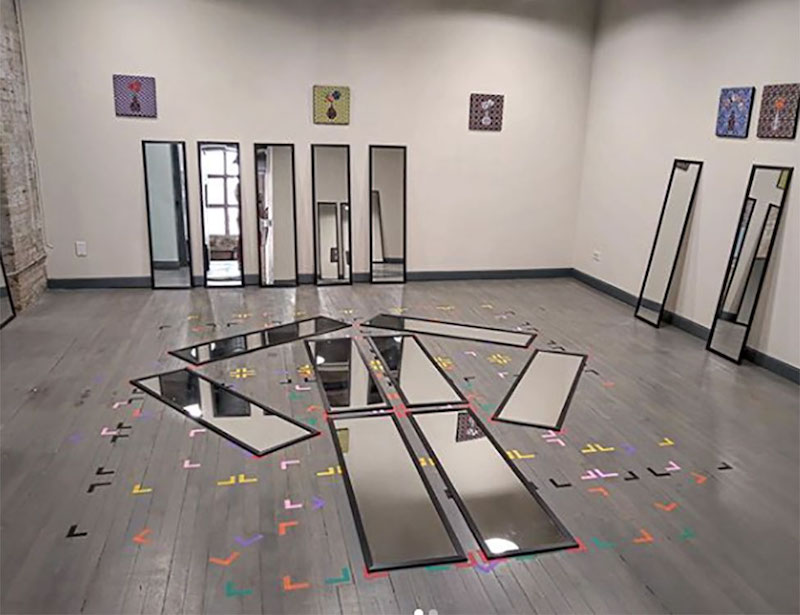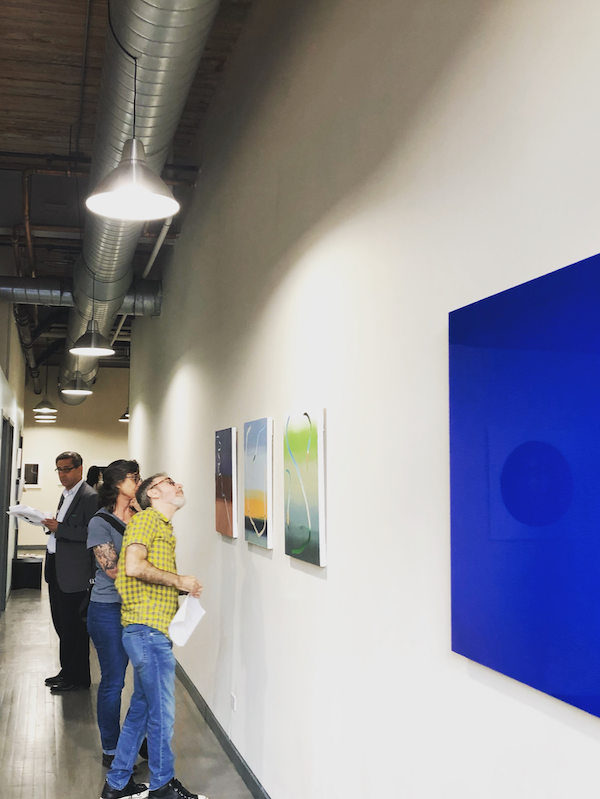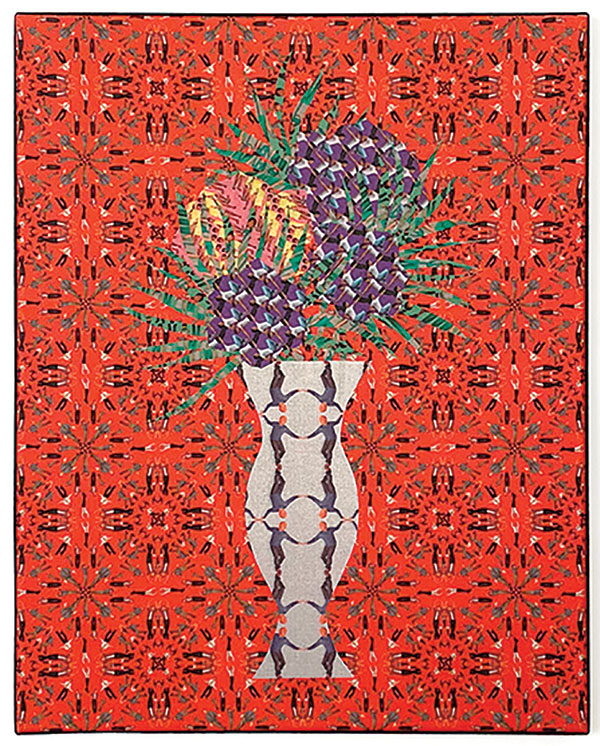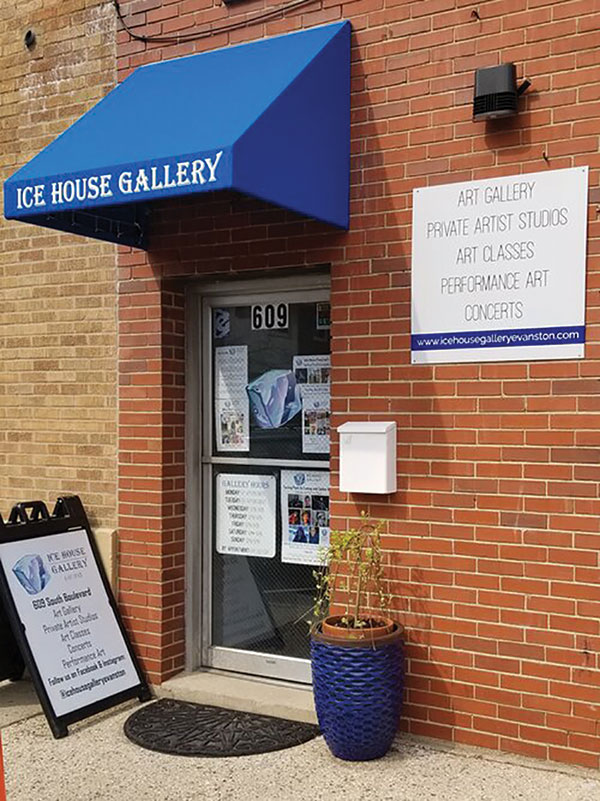Running a New Gallery in a Challenging Climate


By JACQUELINE LEWIS
In the middle of the most challenging market circumstances, I talked to two galleries in Chicago that were both practically brand new at the time. The owners of both spaces – Ice House Gallery and FLXST Contemporary – were candid about what it takes to open and run a new art gallery, as well as how to meet obstacles head on. The directors of each gallery allowed us a peek into their experiences by answering questions about successes and difficulties, and they gave sage, and hopeful, advice to anyone considering opening their own art space.
Publisher's note: This feature was printed in our 2020 summer issue. Unfortunately Ice House did end up closing permanently at the end of May 2020, just after the summer magazine came out. Owner Hannah shared with us that she just couldn't make her young gallery work amidst the financial headwinds of COVID-19 and the extended state-wide shutdown. We are including her insights here for you anyway, since she took the time to speak with us, and we wish her well on her next endeavor.

FLXST Contemporary is a fine art and photography incubator located in Chicago’s Chinatown. Jan Christine Bernabe, Chief Creative & Operations Director, launched the gallery in June 2019. The gallery holds evocative and uncompromising shows full of emerging and mid career artists. FLXST primarily focuses on diasporic, im/migrant artists, LGBTQ identified artists and artists of color based in Chicago.
Why: When working in academia, Jan taught and wrote about persons of color and LGBTQ artists. After, she independently curated shows for the same demographic. This experience demonstrated a need to open a commercial gallery space specifically for these historically underrepresented artists who deserve a legitimate place in the art market. FLXST aims to expands this often ignored space within the Chicago community.
Background Planning: Jan admits that there are many challenges when opening a gallery. She had to simultaneously and successfully manage the business’s fiscal, and curatorial sides. Galleries need municipal and state permits and licenses to run. To receive help with some of these bureaucratic matters, Jan consulted with a small business mentor at the LGBT Chamber of Commerce. She also made sure to create a solid exhibition program and enlist the help of a trusted gallery assistant.
Besides business logistics, Jan has also built solid partnerships based on trust with new contemporary artists.
Challenges: Staying fiscally afloat and covering expenses like operational costs are challenges that FLXST has had to overcome. Unfortunately, money does dictate how most art institutions must approach programming and that is no different for FLXST. That being said, Jan says that being patient with sales and being frugal without compromising quality is helping FLXST grow. They may not be able to enter large art fairs or hire an extensive staffing team yet, but they are creative with what they have.
Successes: Though simply keeping the gallery open is a success in itself, a few moments stand out in Jan’s memory. Last fall, Harvard University acquired four Roberto Jamora prints from the FLXST’s collection, a powerful affirmation of Jan’s gallery goals. FLXST has also had the opportunity to work with many talented, emerging artists like Laura Kina, Jason Dunda, Yasmin Spiro, Jeffrey Augustine Songco, and Oli Rodriguez amongst others.
Tipping Point: FLXST is working towards becoming established. It could be right around the corner, but Jan would rather focus on the “now” rather than the “what ifs” of the future.
Advice: “Every potential gallery owner should understand what they’re getting into and to have the confidence and creativity in navigating any of the challenges that will come their way.” Jan advises anyone who is thinking about opening a gallery to truly consider all the expenses involved. You must be prepared to cover start up costs and other financial issues that will most likely arise. Unless you are independently wealthy, this could be very difficult. Consider consulting a business advisor and always diligently follow the art market as a whole!


Ice House Gallery
Gallery Owner and Director Hannah Litvan opened Ice House Gallery in late 2017 to support, connect and celebrate all things art in Evanston. The gallery is multifaceted. They currently offer community classes and exhibitions while continuing to expand their programming.
Why: Hannah noticed that the Evanston area art scene was in need of a gallery that catered to local artists. She hoped to create a space for artists of all levels to showcase their work and gain gallery experience.
Background Planning: Before opening, Hannah networked and developed relationships with area artists and other art spaces in order to generate buzz around Ice House’s grand opening. First there was a lot of administrative work to sort through to even reach that point. Originally, Hannah searched for a smaller space, but after finding its larger, current location, she saw an opportunity for future expansion. Ice House could grow beyond its original vision or open additional avenues for income based on the space’s evolving needs.
Challenges: Hannah believes that marketing and media are extremely important for any business, especially in today’s climate. “Marketing is always changing and you really have to self educate to stay on top of it.” Ice House’s team overcomes this ever evolving situation through a solid team of employees that seamlessly blend imaging and public presentation. Coming together as a community also lessens the stress of running a new business.
Successes: “Staying open for any small business, let alone an art business, is a major accomplishment!” Through flexibility and by listening to the community’s needs, Ice House has survived and thrived. Hannah hopes to be able to update the gallery’s space to look sleeker, as well as add a professional stage for live performances. They are also planning to expand their programming with Art Maker’s Outpost, a new space for creative workshops that will utilize recycled materials from the community.
Tipping Point: “It’s happening right now!” Renovations could shift the gallery towards a more “high-end” vibe, and Hannah wants Ice House to enter its next phase to become an established fixture in the Chicago area art scene. COVID-19 has put plans temporarily on hold.
Advice: “It’s not easy, but that’s okay! Art is a fluid world and you have to find your niche. Devote yourself to your vision, but listen to your artists and patrons to ensure you’re opening a space that can fill gaps in your art community.”





